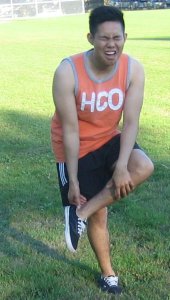Shin splints is a pain felt along the shinbone or the tibia which is the large bone found in front of the lower leg and quite common in runners, dancers and military recruits. Shin splints is also known as medial tibial stress syndrome and happens in athletes that have intensified and changed their training routines which causes the tendons, muscles and tissues of bone to be overworked due to an increased activity.
Symptoms
- Mild swelling in the lower leg
- Tenderness, soreness or pain felt along the inner portion of the lower leg
- Pain is minimized when the person stops exercising or running but pain can become severe
Causes
- Shin splints can be caused by tiny breaks in the lower bones or stress fractures
- Swelling and irritated muscles due to overuse
- Weakness in the stabilizing muscles of the hips or core
- Overpronation or “flat feet” in which a strong impact of a step can make the arch of the foot collapse
- Common in runners such as changing the intensity of the workouts or changing the surface that they are running like shifting from a dirt path to asphalt.
- Shin splints can also happen in dancers such as changing movements of their legs.
Treatment

- Take plenty of rest in order to help fast healing of the condition.
- Apply an ice pack the affected area in order to help lessen swelling and pain at least 20-30 minutes every 3-4 hours for two to three days until the pain disappears. Another way is applying cold using a bag of frozen vegetables such as corn kernels or peas.
- Tape shin splints using an elastic bandage or wear a neoprene sleeve over the lower leg in order to give comfort by compressing the affected area which helps minimize the inflammation and support the tissue and for minimized movement of the affected area. Perform gentle movements in order to help in the proper circulation of blood to the area and eliminate excess fluid from the inflammation.
- Take the prescribed over-the-counter pain medication such as ibuprofen, naproxen or aspirin to lessen swelling and pain.
- Use orthotics for the shoes such as inserts to help with the arches that flatten or collapse when standing up. It also helps protect the affected area from excessive pounding during jogging or other high-impact and weight-bearing activities.
- Perform exercise on surfaces such as a running tract, crushed grass or gravel or asphalt road. Avoid cemented road as much as possible.
- Switch to other types of activities such as swimming, stationary cycling and other activities that do not strain on the shins.
- Avoid running up and down a hill since it can make the condition worse.

